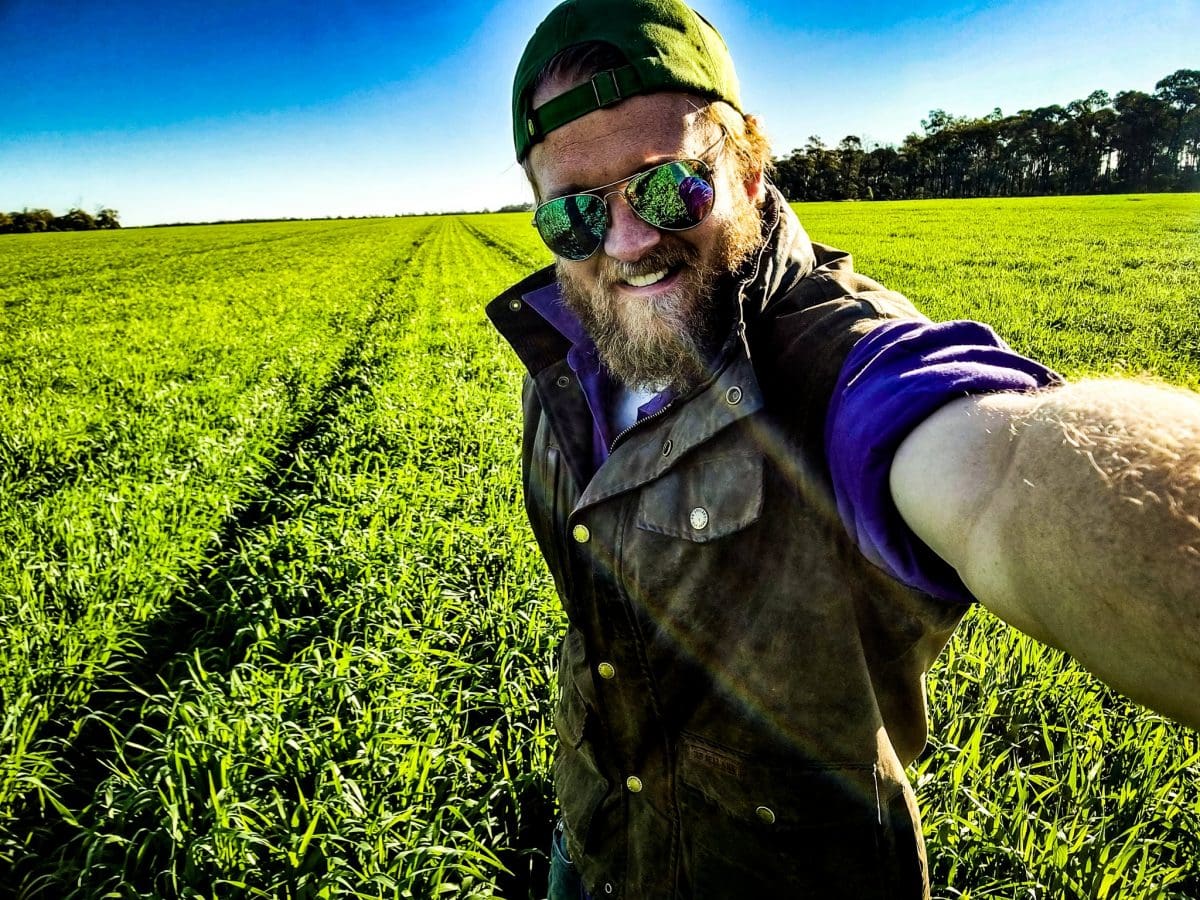
Condamine grower Jake Hamilton with his well-advanced crop of Planet barley.
A SLIDE in global grain values has prompted an increase in grower selling as yield prospects consolidate in most of Australia’s growing regions.
On the logistics front, the driest week seen since mid-June in all but north-central New South Wales has enabled traders to pick up grain for delivery to consumers without interruption.
Trade sources say the northern market is steady but has a softer feel related to the easing of the logistics squeeze.
In the south, the widening inverse to new-crop has brought growers to the market as wheat and barley continues to find export and domestic homes.
| Nearby | New-crop | |
| Barley Downs | $310 steady | $270 down $10 Jan |
| Wheat Downs | $325 steady | $290 down $10 Jan |
| Sorghum Downs | $310 down $2 | $260 down $15 Mar-Apr |
| Barley Melbourne | $275 down $5 | $260 down $15 Jan |
| Wheat Melbourne | $327 down $2 | $310 down $5 Jan |
Table 1: Indicative delivered prices in Australian dollars per tonne.
Northern movement picks up
Delivery of wheat and barley from northern NSW and southern Queensland to domestic consumers has ramped up this week due to increased availability of trucks.
Some clear and windy days have improved access to grain stored on farm in many areas, and consumers are now taking delivery of grain they were expecting as far back as May.
“Barley on the Downs certainly feels softer because people are getting a handle on their logistics and trucks are getting easier to find,” Smithfield Cattle Co commodity buyer Brett Carsburg said.
Darwalla Milling feeds manager Gary Heidenreich agreed.
“Everyone’s seen that logistics limitation, and trucks are easier to get,” Mr Heidenreich said.
“With the international moves, it’s looking like we’re down $5-$10/tonne going forward.”
Poultry and cattle feeders are still using both wheat and barley in their rations.
Top-grade sorghum continues to feed into containerised and bulk exports, while sprouted and discounted sorghum is pricing into selected poultry rations at around $45-$50/t below the premium grade.
Poultry rations are using sprouted sorghum at low inclusion rates, and this limited demand suits its slow march to market from growers on the Downs, where the wet end to harvest is pushing most loads through the drier first.
On the production front, wheat and barley crops across southern Queensland are powering ahead on recent rain, and feedlots are expecting new-crop deliveries to start perhaps a fortnight earlier than normal.
It means the new-crop Downs market is finding some additional liquidity in November-December, instead of the normal January-plus-carry slot.
Export looks inland
In the southern market, export accumulators are looking further afield to accumulate grain for the last cargoes booked for the 2020-21 (Oct-Sep) marketing year.
“There’s still plenty of grain to go around, but I think there’s more in NSW than there is in Victoria; the exporters have already plucked that low-hanging fruit,” Emerald Grain south-east regional manager Brad Cullen said.
Making the task easier when transporting it from north of the Riverina is the increased availability of road freight.
“Trucks are a lot easier to get than they have been.
“That’s good, because demand continues to be heavy at export points for wheat and barley.”
Mr Cullen said a softening in offshore markets in the past week has brought grower to the market.
“They’re seeing that new-crop inverse approaching.”
While the Murray Mallee still has limited subsoil moisture, Mr Cullen said growers in the rest of south-eastern Australia have more confidence in the season now that significant subsoil moisture is sitting under the crop.
In the week to 0900 today, most South Australian growing areas west of the Murray Mallee got around 10-25 millimetres, with Clare getting a welcome 27mm, and Cummins and Moonta receiving 19mm.
Victoria’s main growing areas and the NSW Riverina got mostly less than 10mm for the week, while north-central NSW got the heaviest falls in the eastern Australian grainbelt.
Registrations include Coonamble with 32mm, Coonabarabran with 57mm and Dunedoo with 29mm.
Rain in Queensland was patchy, with Macalister on the Darling Downs getting 29mm and Clermont in Central Queensland jagging 22mm.



HAVE YOUR SAY